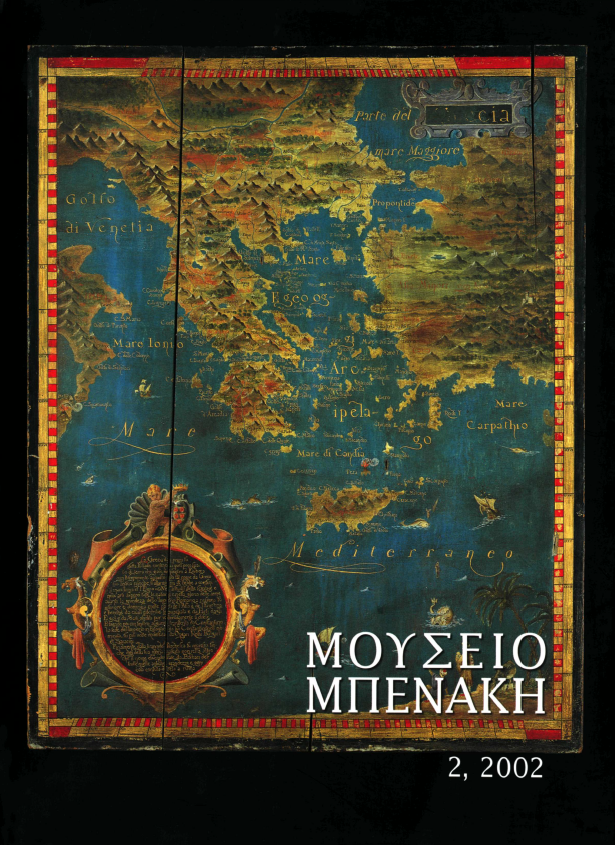Aegean marble carvings in the Benaki Museum
Abstract
The Benaki Museum has the good fortune to possess some examples of neo-Hellenic marble carving of a type which rarely finds its way into public collections or museums. Marble fanlights (kamarid) carved in champlevé, and a marble fountain with relief ornamention, all from Tinos, form the background to a study of the ornamental secular art of the Aegean. Door and window surrounds from a mansion in Ios are impressive examples of architectural carving. Their close relationship, typologically and stylistically, with similar works in Mykonos, Paros, Skopelos, Chios and Amorgos suggests that their provenance is a workshop circulating in that area in the 18th century, but no more precise attribution is possible. Such objects are thought to have associations with Renaissance models, but how and when these were introduced to the Aegean cannot be determined. The twin-tailed gorgon flanked by dragons, a relief on a slab in second use, is a motif unique in Aegean marble carving. However this dragon is a standard feature of the architrave of marble sanctuary screens, at the foot of the cross and often supporting the lypira. The gorgon motif occurs on carved wooden sanctuary screens in mainland Greece. Bare-breasted gorgons can also be found on late 17th century wooden screens in Zakynthos, and probably indicate Italian influences. Moreover this motif of a gorgon holding her twin tails in her outstretched arms is to be seen in ornamental church carving in northern Italy (Modena) as early as the 12th century, and seems to have its origins in the 9th century Liber Monstrorum,which contains figures of a cosmological nature. The gorgon on carved wooden templons has an apotropaic character which is confirmed by the presence of the dragons flanking her; this suggests that the slab would have formed part of the decoration of the upper registers of a marble templon screen, in the centre below the cross. This is an unusual representation in the style of folk art, which probably originated in the Cyclades in the 18 th century; however it has not yet revealed all its secrets to us.
Article Details
- How to Cite
-
Γουλάκη-Βουτυρά Α. (2018). Aegean marble carvings in the Benaki Museum. Mouseio Benaki Journal, 2, 111–123. https://doi.org/10.12681/benaki.18191
- Issue
- Vol. 2 (2002)
- Section
- Articles

This work is licensed under a Creative Commons Attribution-NonCommercial-ShareAlike 4.0 International License.
The copyright for articles published in Mouseio Benaki is retained by the author(s), with first publication rights granted to the journal. By virtue of their appearance in this open access journal, articles may be used freely for non-commercial uses, with the exception of the non-granted right to make derivative works, with proper reference to the author(s) and its first publication. The Benaki Museum retains the right to publish, reproduce, publicly display, distribute, and use articles published in Mouseio Benaki in any and all formats and media, either separately or as part of collective works, worldwide and for the full term of copyright. This includes, but is not limited to, the right to publish articles in an issue of Mouseio Benaki, copy and distribute individual reprints of the articles, authorize reproduction of articles in their entirety in another publication of the Benaki Museum, as well as authorize reproduction and distribution of articles or abstracts thereof by means of computerized retrieval systems.


